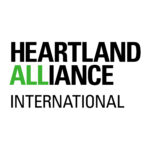DATA SYNC
SEJEN CI collabore avec des partenaires du PEPFAR pour optimiser la gestion et l’utilisation des données sur les personnes vivant avec le VIH.
Context
“HIV is an important public health problem that has an impact on development,” said Ivorian President Alassane Ouattara in the preface to the National Strategic Plan (PSN) 2016-2020. He added that Côte d’Ivoire was part of “a global vision to eradicate AIDS by 2030”.
Indeed, recent statistics from the World Bank and UNAIDS show that the prevalence of HIV in Côte d’Ivoire among people aged 15 to 49 was 2.8% in 2017. These figures place Côte d’Ivoire almost at the bottom of the list of West African countries, ahead only of Guinea Bissau (3.2%). Moreover, in the momentum towards the UNAIDS 90-90-90 targets, recent results from Côte d’Ivoire are alarming. Although 88.1% of diagnosed patients are on continuous antiretroviral treatment, and 75.9% of these patients on treatment maintain viral suppression, it is estimated that only 37.29% of positive patients know their HIV status.
Challenges
As part of the activities of the Data Collaboratives for Local Impact (DCLI) Program in Côte d’Ivoire, SEJEN CI has approached two implementing partners of the President’s Emergency Plan For AIDS Relief (PEPFAR) program: Heartland Alliance International ( HAI) and ACONDA VS. These two organizations have more than 170 clinical data collection sites (135 for ACONDA VS and 35 for HAI) out of the 916 sites listed in the country in 2019, and represent nearly 20% of the sites. At the end of these consultations, three major problems were identified:
- The quality of the data collected is questionable given that many sites are simultaneously using different instances of the patient management system (the “SIGDEP”) and manual synchronization processes, thus generating duplicates.
- Consolidating data records and creating reports is a long and arduous process of manually comparing indicators against quarterly datasets provided by each site.
- The data transmitted to the central office is processed in Excel and the analysis or visualization tools used are rudimentary, which makes the analysis long and difficult.
Solutions
Concerning ACONDA VS, SEJEN CI has automated the data synchronization process between the services (reception, patient management, pharmacy or laboratory, etc.) of a pilot site by installing a local network linking the systems and the use of a single instance of SIGDEP on the site.
To reduce the volume of manual work when reporting data, SEJEN CI has developed:
- An application for data consolidation and synchronization of indicators transmitted to the central headquarters.
- A new data verification and validation tool for HAI, thus contributing to an improvement in data quality.
- Dashboards to encourage better management based on informed decision-making at all levels of the partner data chain.
Machine Learning to identify duplicates.
SEJEN CI used Machine Learning to identify the rate of duplicate patients (duplicates). The ML tool is based on data such as surname, first name, sex, date of birth, address, etc. In a limited sample of sites visited (a hospital center, health training center and other site), the tool made it possible to detect up to 2% of duplicates on average.
Process
SEJEN CI started by analyzing the data collection process. This diagnosis identified 4 opportunities for improvement:
- (1) During screening, patient information is collected either in Excel files or in SIGDEP depending on the site;
- (2) In some computerized sites, several instances of SIGDEP coexist (pharmacy, laboratory, etc.), increasing the risk of transmission and duplication errors;
- (3) For the quarterly transmission of data to the regional centers, the extracted information is compiled with data from other sources in large Excel files, which are sent by email, together with the files from other sites to the central headquarters ;
- (4) Finally, this process generally lasted between 2 and 3 months.
SEJEN CI first facilitated the use of a single SIGDEP version on the pilot site and developed an application for the disaggregated entry of information not collected by SIGDEP.
SEJEN developed another application to automatically extract, transform and load (ETL) local data and transmit it to the central headquarters database. At the same time, the SEJEN CI team also conducted analyzes to identify the rate of duplications (cases of duplicates) and proceeded to their elimination and the purification of the databases.
Results
The current system allows site employees to share patient data with other departments on a local network, thus guaranteeing the validity of the data and avoiding certain duplications. In addition, the duplicates identified during the evaluation carried out by SEJEN CI (see thumbnail on the first page) have been corrected. The processing of reports has been reduced from one week to one day, producing considerable time savings. In addition, data collection and compilation times at ACONDA VS and HAI headquarters have been reduced from an average of 3 months to less than a week, which ensures better decision-making capacity.
The management of information systems, the data collection and analysis process of the IT Departments of ACONDA and HAI have been strengthened. The application developed by SEJEN CI is being used by agents and staff working daily on HIV data at the HAI partner, thus leading to better quality data produced and transmitted to PEPFAR.
The success of this activity prompted ACONDA VS to replicate this approach on all its sites. The hardware required to support the ETL application developed by SEJEN CI at ACONDA VS headquarters has already been acquired. HAI requested from SEJEN CI a transfer of knowledge in order to inform the acquisition of an application similar to the one developed and decided to acquire SALESFORCE (a case management system) for patient monitoring. SEJEN CI intends to share the experience gained and offer these applications to other PEPFAR partners with whom it has recently started working.
Collaborateurs clés


